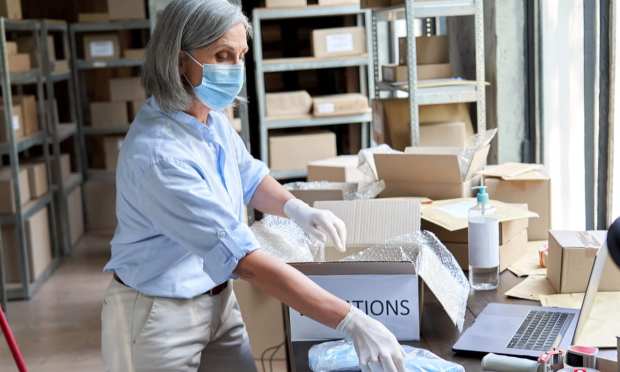Digital B2B Payments Sustaining Charities Through Downturn

In natural disasters of the recent past we’ve witnessed government and NGO responses ranging from effective to dangerously disorganized. The COVID episode was not much different in that it taxed infrastructures and negatively impacted money flows already under duress.
PYMNTS’ latest Digitizing B2B Payments Tracker® done in collaboration with Deluxe delves into the inner workings of modernized digital disbursements in such times of dire need.
COVID-19 is a perfect example of what disaster aid response looks like, bad and good. The level and scale of innovation it’s caused: good. Methods and speed of payouts: less good. This is all, in turn, upending the nation’s charities profoundly as they now need help themselves.
“The ongoing crisis has deeply affected both charities and nonprofits as their operating costs often depend on the number of individuals they serve and the donations they receive,” per the latest Tracker. “Donors facing their own financial difficulties have cut back on sending funds even to big-name nonprofits, for example, and United States charities stated in a May survey that they expected donations to dip by at least 20 percent.”
Faster, smarter B2B payments solutions are coming to bear on this problem, however, and that’s a gift to donors and aid organizations across the spectrum of coronavirus crisis response.
Payments Modernization And The Giving Industry
As the economy shut down and markets tanked over the first half of 2020, charitable giving took a hit. It’s generating a great deal of interest in payments modernization for the space.
Per the Digitizing B2B Payments Tracker®, “Many nonprofits are interested in digital tools for the payment speeds they need, but their adoption of such solutions has been measured.”
For example, “One recent study found that 51 percent of charities lack digital strategies that would enable them to integrate online solutions for B2B payments or other transactions, and only 10 percent of respondents reported implementing digital technologies.”
The matter is money, as the Tracker notes that “Cost again appears to be the biggest hurdle, especially for smaller nonprofits that run solely on donations. Finding solutions that merge digital technologies’ speed with the familiarity of check-based payments appears to be a top priority for these entities.”
Saving Charities By Avoiding Paper
Payments platforms and their efficiencies are more and more on the minds of the professionals whose work is keeping a flow of aid to people, urgently. They have a way to go yet, though.
“Digitizing B2B payments is not necessarily a novel concept to most of these organizations as many were making digital strides well before the pandemic’s onset, but progress has been slow. Just 38 percent were using electronic payments in any capacity before the health crisis began, according to one July study, while 31 percent of nonprofits claimed they were in the process of implementing such methods,” according to the new Digitizing B2B Payments Tracker®.
On that count, “Allowing these organizations to avoid paper invoices and manual data input could save them a significant amount of time, even if their partners or vendors are still expecting paper checks at the end of each transaction,” per the Tracker.
